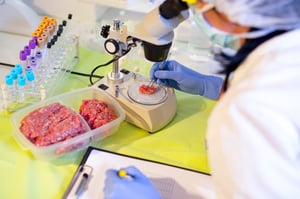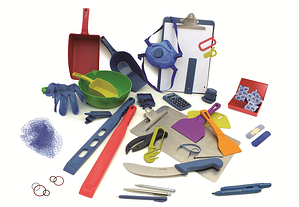 Earning a Global Food Safety Initiative (GFSI) certification is a major milestone for any company in the food industry. Meeting the rigorous safety standard isn’t always easy, but the rewards are often well worth the effort.
Earning a Global Food Safety Initiative (GFSI) certification is a major milestone for any company in the food industry. Meeting the rigorous safety standard isn’t always easy, but the rewards are often well worth the effort.
In an earlier post, we discussed how you can perform a food safety gap analysis to identify key risks in your business so they could be remediated. However, what steps should you take to reduce risks once the gap analysis is completed?
The answer depends on the specific risk factors that you identify in your gap analysis, but some common measures include:
Updating/Upgrading Food Quality Inspection Equipment
Over time, you may find that your product inspection needs have changed. This can be for a number of reasons, such as a change in raw ingredient quality, new production equipment, or the addition of whole new product lines.
Whatever the reason, it’s important to make sure that your product inspection capabilities are up to snuff for detecting your biggest contamination risks.
Updating your product inspection equipment can help you find a wider variety of contaminants in products that older systems might miss. For example, newer x-ray systems with material discrimination (MDX) technology can detect contaminants based not just on their density, but by their chemical composition. This greatly expands what contaminants MDX product inspection machines can find.
Additionally, newer machines might have more functionality for detecting faults in packaging, such as check-weight and seal inspection systems to further verify quality.
Using Detectable Components in Production
 Aside from ensuring that you have the best product inspection equipment, another way to increase safety is to make sure that the tools you use in your process can be detected by your x-ray or metal detection systems.
Aside from ensuring that you have the best product inspection equipment, another way to increase safety is to make sure that the tools you use in your process can be detected by your x-ray or metal detection systems.
It happens all the time: workers accidentally drop pens or other items into the ingredient batch, or pieces of a mixing machine shear off and fall into the mix. Components of the production equipment accidentally falling into the product is one of the biggest risks any food maker faces.
By replacing tools and equipment with components that are specifically designed for maximum detectability, you can greatly reduce your risk of contaminated product slipping past your quality control points.
Carefully Assess Your Ingredient Suppliers
It’s often a good idea to routinely check your records and assess the overall quality of the ingredients you get from each of your suppliers. A bad supplier can cost you millions if contaminants from their facility get through your production line.
Of course, to do this, you need to have a strict system in place for tracing contamination back to the source. This task will require some effort in creating and keeping up with paperwork for where each ingredient comes from.
Adding contamination detection to the raw ingredient inflow can also help increase your ability to track back contamination risks to specific suppliers. This helps you assess your suppliers and minimize risks.
Review Your Sanitation Guidelines
This is especially important for any companies that handle raw or cooked meat products. One of the hardest forms of contamination to detect is bacteriological contamination caused by insufficient sanitation.
To minimize foodborne illness risks, it’s vital to periodically review your entire production process for sanitation risks. Eliminating collection points for liquids and verifying that employees know and follow proper sanitation guidelines can go a long way towards being able to pass a GFSI food safety audit.
If you do find a food contamination risk, remediate it as soon as possible and document your procedure for doing so—the added documentation might help future efforts to improve safety as well as prove adherence to GFSI standards.
These are just a few of the steps that you might need to take to preemptively minimize food safety risks for a GFSI certification. For more advice, check out some of our other blogs, or contact us today!




